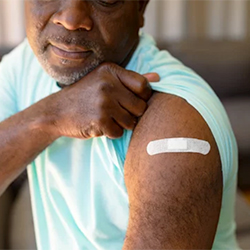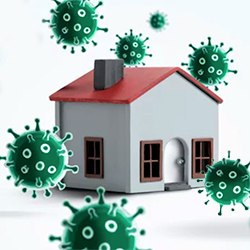By Tom Rosenthal
National vaccination rates for routine childhood immunizations dipped from 95% last year to 94% for the 2020-2021 school year among children entering kindergarten, the CDC reported (MMWR Morbid Mortal Wkly Rep 2022;71[16]:561-568).
“This might not sound like much, but it amounts to at least 35,000 more children across the United States that entered kindergarten without documentation of complete vaccination against common diseases like measles, whooping cough and chicken pox,” Georgina Peacock, MD, MPH, the acting director of the CDC’s Immunization Services Division, said in a media briefing on the effects of the COVID-19 pandemic.
Dr. Peacock said kindergarten enrollment dropped by 10% nationally. That translates into 400,000 less children entering kindergarten than expected. “Those children also might not be up to date on their routine vaccinations,” she said.
“This is further evidence of how the pandemic-related disruptions to education and healthcare could have lingering consequences for children,” Dr. Peacock said. But “the good news is routine vaccination coverage remains high, and we can recover ground lost.”
Shannon Stokley, DrPH, the deputy director of the CDC’s Immunization Services Division, said during the briefing that kindergartners with an exemption to at least one vaccine remained low at about 2.2%.
She noted that 3.9% of kindergartners were not up to date on their measles-mumps-rubella vaccinations and did not have an exemption.

“Overall, today’s finding supports previous data showing a concerning decline in childhood immunizations that began in March 2020,” Dr. Stokley said. “For example, CDC provides vaccines for nearly half of America’s children through the Vaccines for Children program. And over the last two years, orders for distribution of routine vaccines are down more than 10% compared with before the COVID-19 pandemic.”
Dr. Stokley said the impact of the downward trend is being evaluated. “We are concerned that missed routine vaccinations could leave children vulnerable to preventable diseases like measles and whooping cough, which are extremely contagious and could be very serious, especially for babies and young children,” she said.
“We know parents, schools and healthcare providers are all under increased stress caused by this pandemic,” Dr. Peacock said. “As a parent myself, as well as a pediatrician, I understand the ongoing challenges that so many are facing.
“However, with most schools back to in-person learning, extra effort is needed to catch up children who missed vaccines and to maintain high levels of routine childhood vaccinations, and equitable coverage to help protect children, their families and their communities against vaccine preventable diseases,” she said.
These steps work. For instance, Dr. Stokley said more than half of the 47 states and the District of Columbia that provided statistics to the CDC reported increases in vaccine uptake during a vaccination grace period, which allowed the students to start school while catching up on their vaccinations.
Dr. Peacock outlined several other steps that can be taken:
- Parents should work with their children’s doctors or nurses to catch up on missed well-child visits and recommended vaccinations.
- Healthcare providers should flag the medical records of children who are behind or due for vaccinations and offer vaccine-only appointments.
- Clinics and schools should send reminders home for children who are behind on routine vaccinations.
The CDC is also prioritizing catch-up for routine vaccinations, the physicians said.
“As Dr. Peacock said, the good news is routine vaccination coverage remains high, and we can recover ground lost during the COVID-19 pandemic with most schools back to in-person learning,” Dr. Stokley said. “Following up with under-vaccinated students is critical to maintaining the high coverage needed to protect children against vaccine-preventable diseases.”




